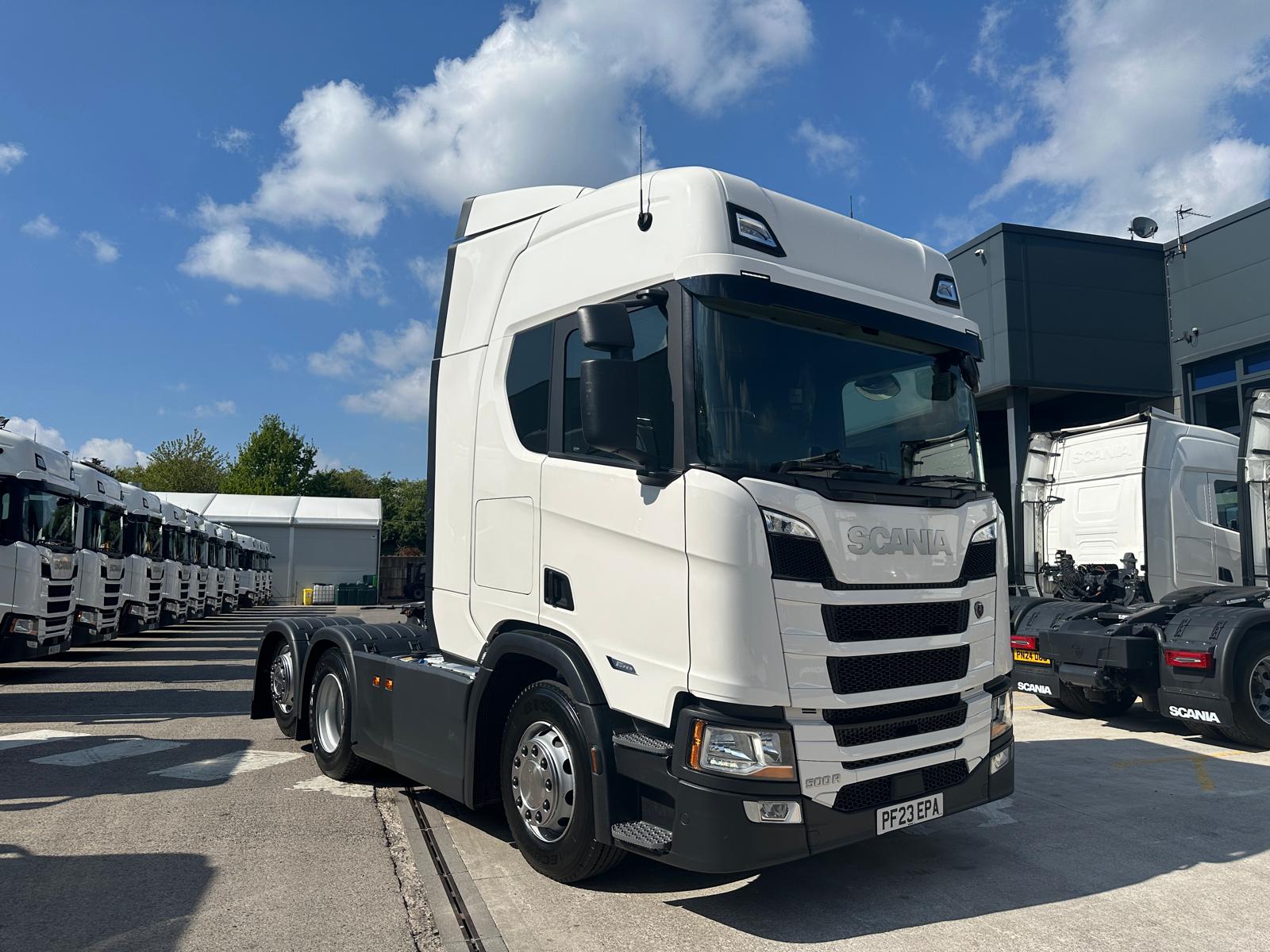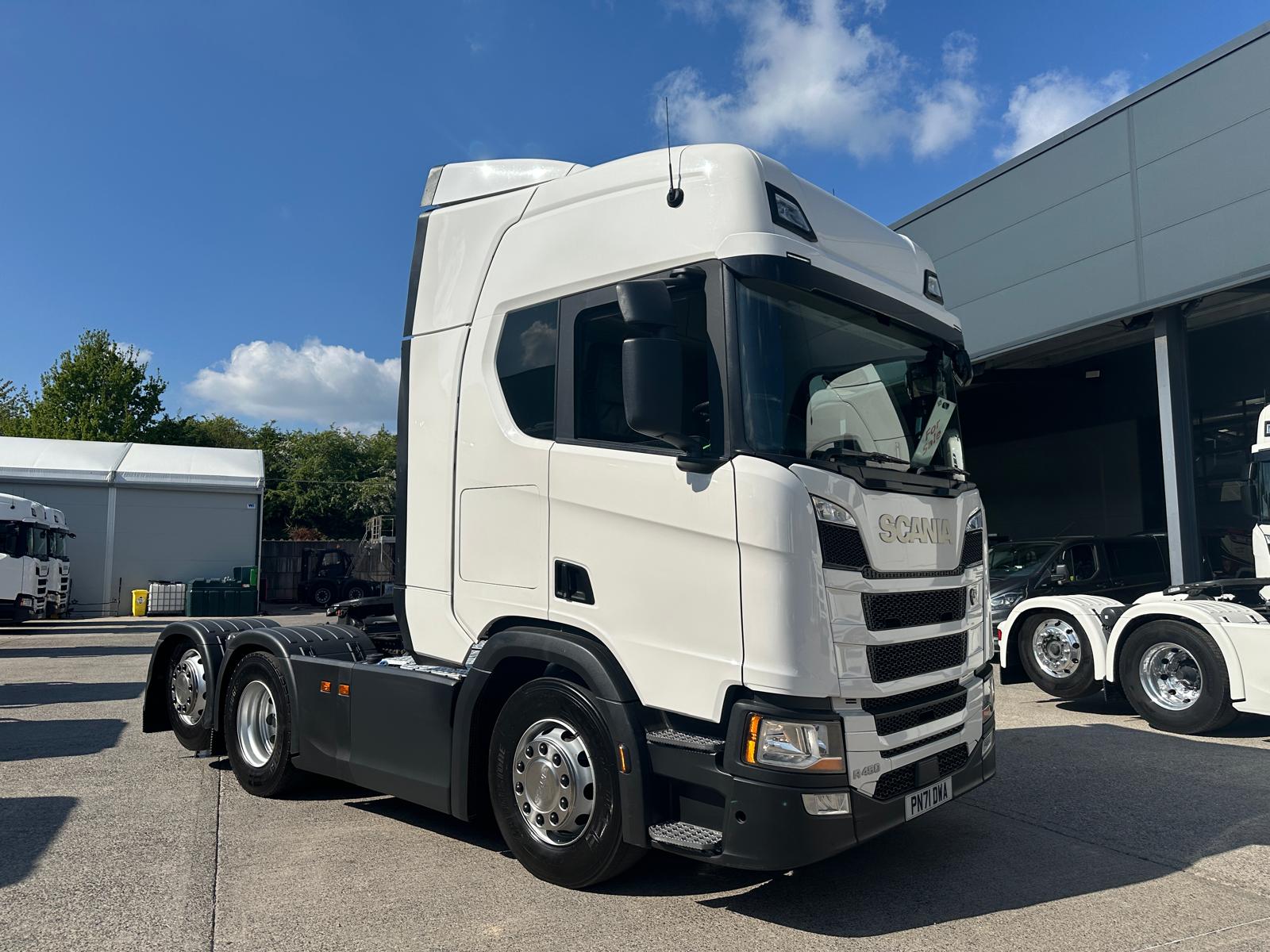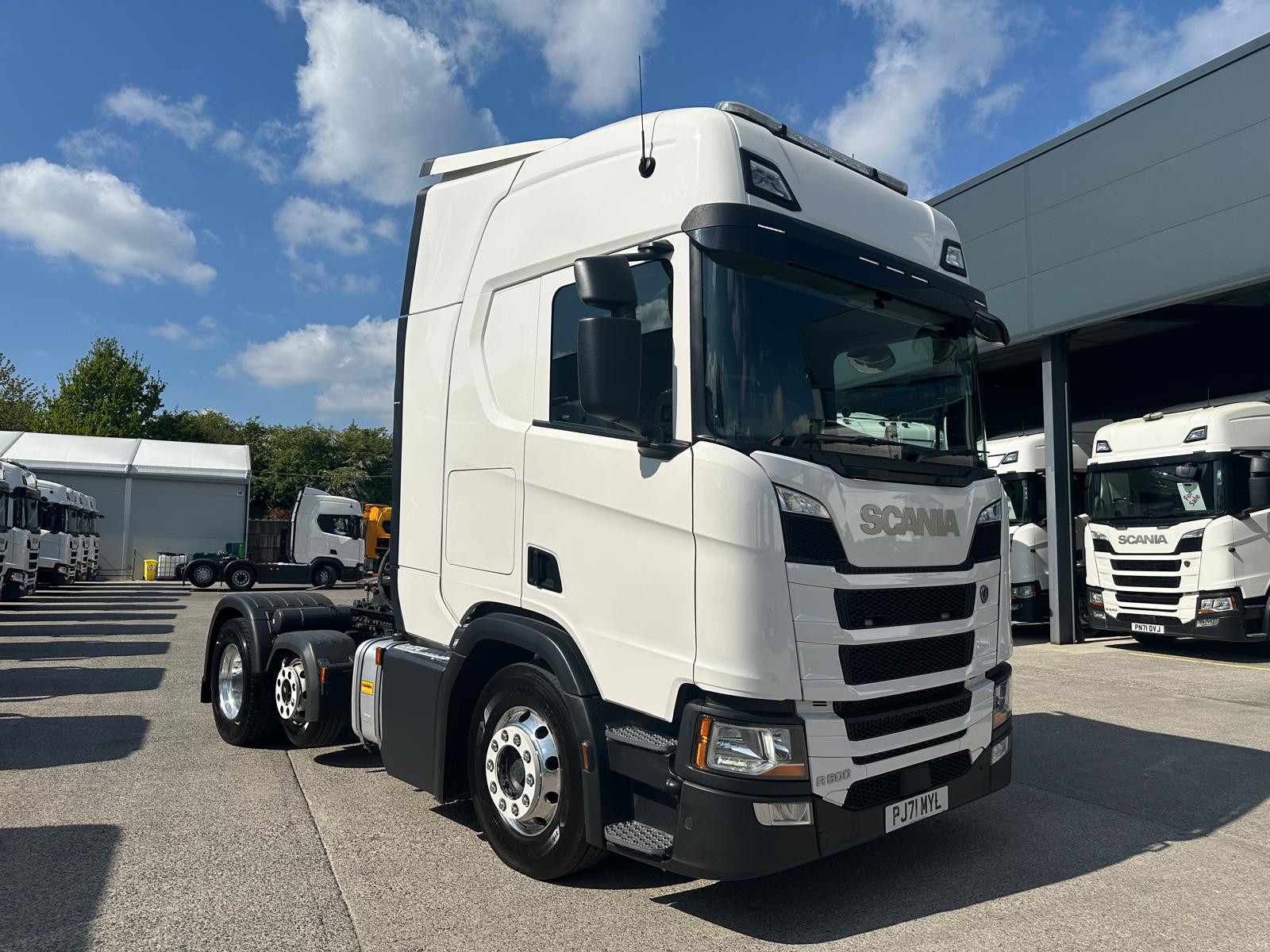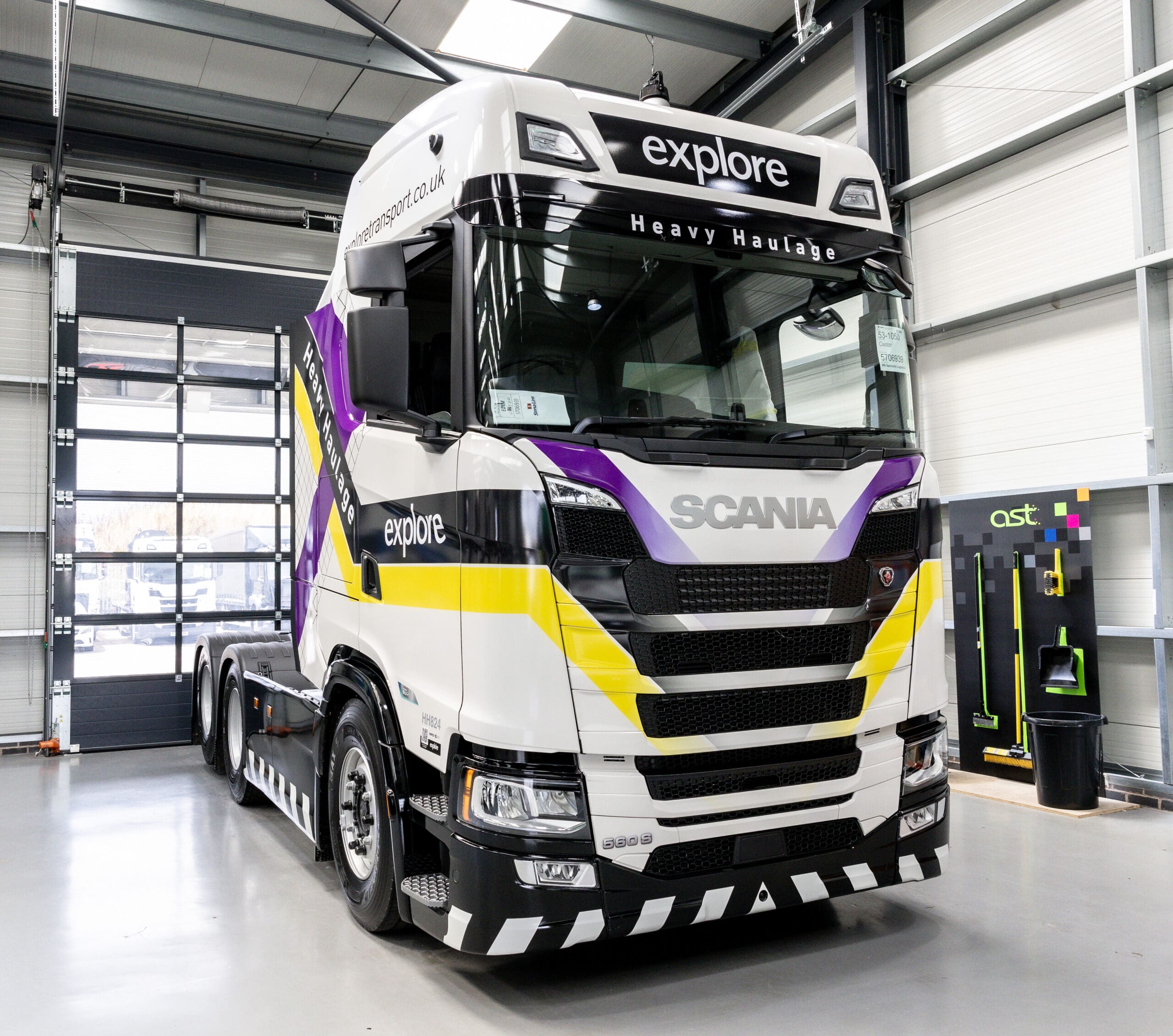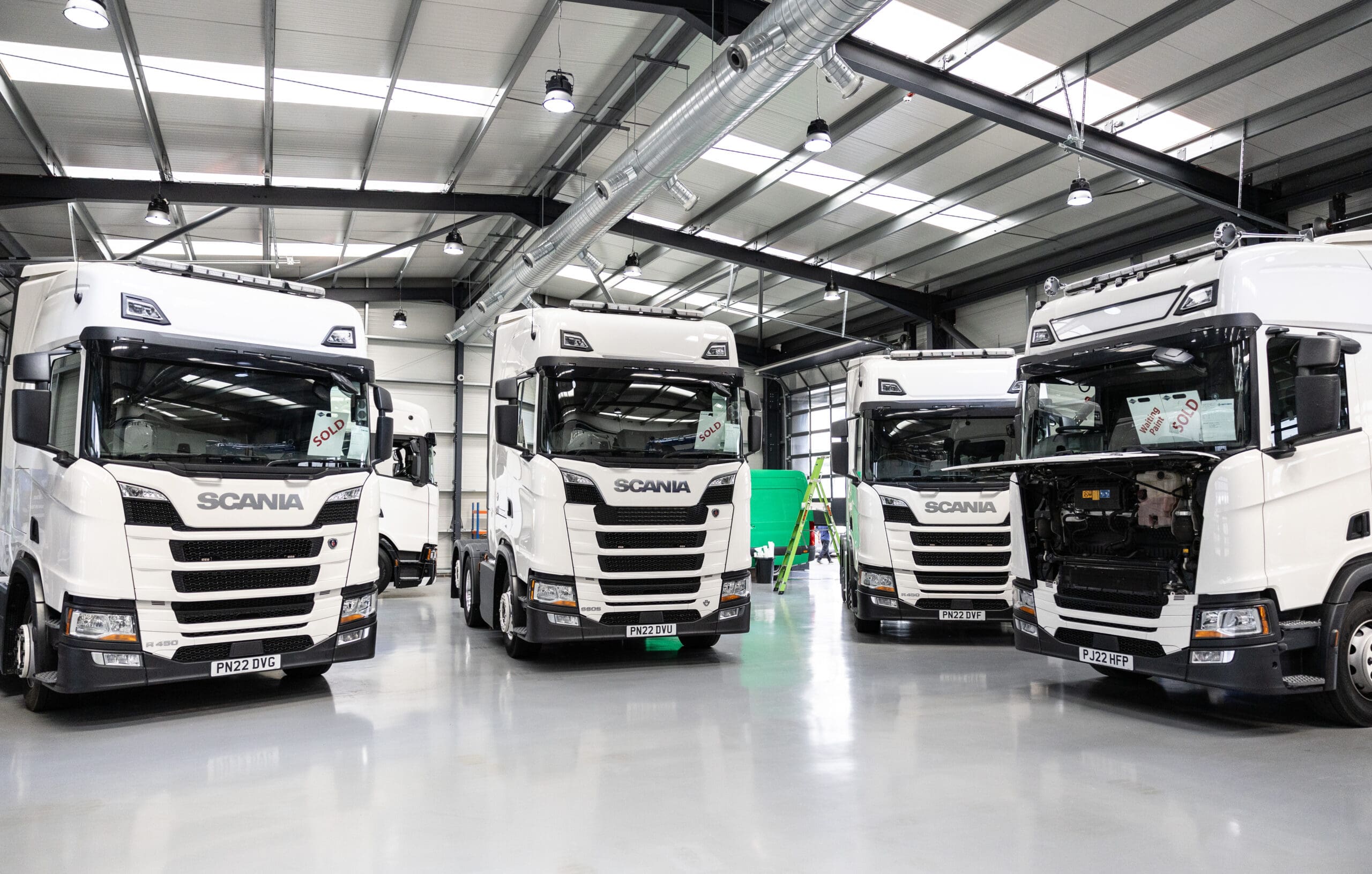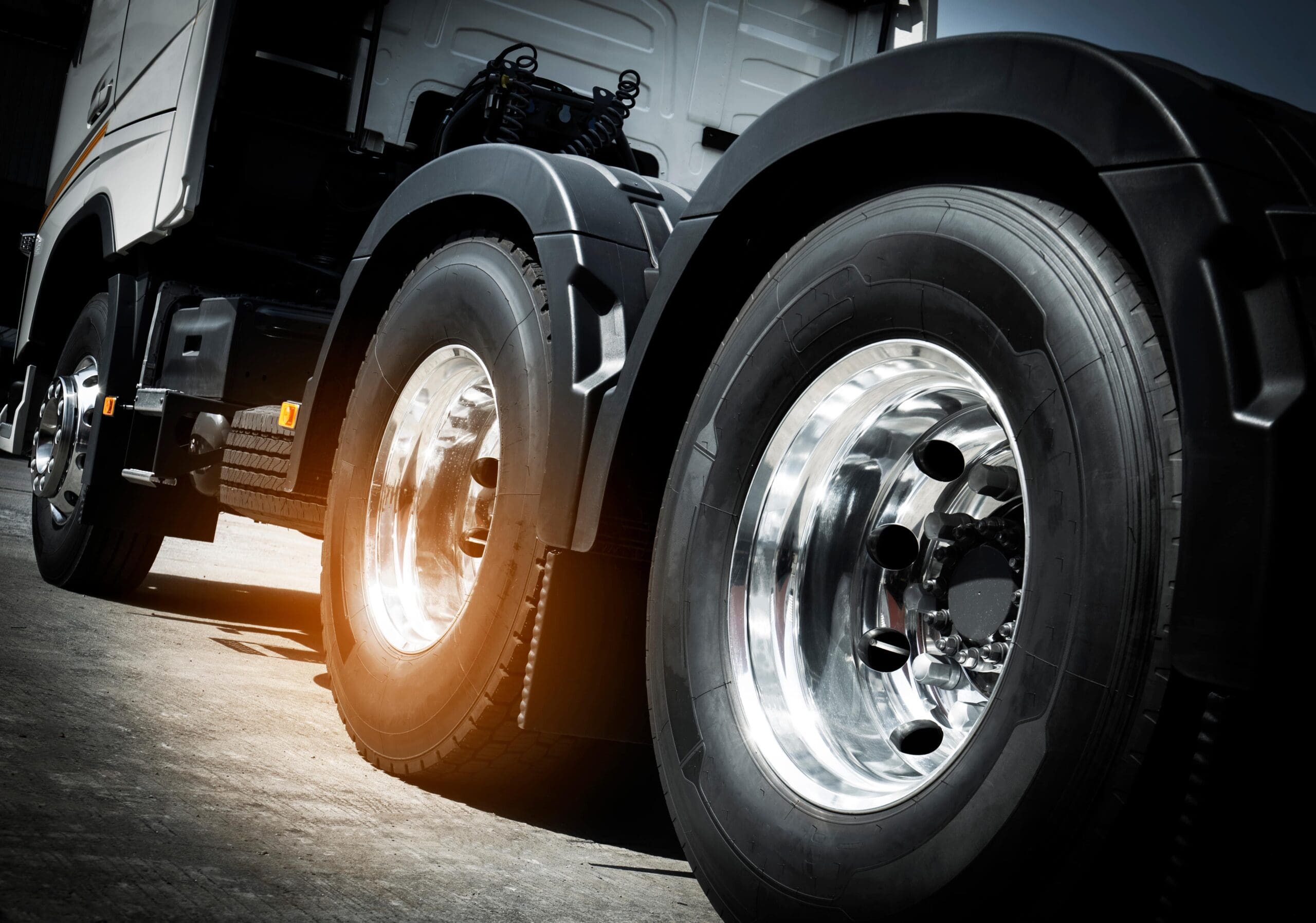When seeing lorries on long-haul journeys across the country and the wider continent, one of the most pressing questions that come to mind for most people is, ‘Where do lorry drivers sleep?’. After all, an average day of driving for any individual behind the wheel of a lorry is around 7-8 hours, with 10 being the absolute maximum; so when exactly do they get their beauty sleep?
45-minute breaks are required after 4 and a half hours of driving, in which drivers can take a quick nap if desired, yet their regular 11 hours allocated for daily rest is when they can get their proper sleep in. They have the option to sleep wherever they like, but most lorry drivers opt for bedding down in the sleeper cab just behind the front seats of the vehicle.
Most of the pre-owned trucks for sale offer such spacious sleeping cabs, allowing your drivers to receive the sleep they need before proceeding with their deliveries.
What are sleeper cabs?
Often partitioned with a curtain or folded up into the back wall of the cab, sleeper cabs are a small compartment for sleeping that is situated just behind the seating area. Often compact and space-saving, sleeper cabs usually just consist of a fold-down bed, but some lorries can accommodate everything from small storage areas to even a large TV space.
Some lorries offer more comfort than others, with smaller makes providing just a fold-out bed, while others provide an ample sleeping area with extra luxury amenities. This is an important factor to consider when purchasing new and pre-owned trucks for sale, especially as the difference between one sleeper cab and the next will vary considerably.
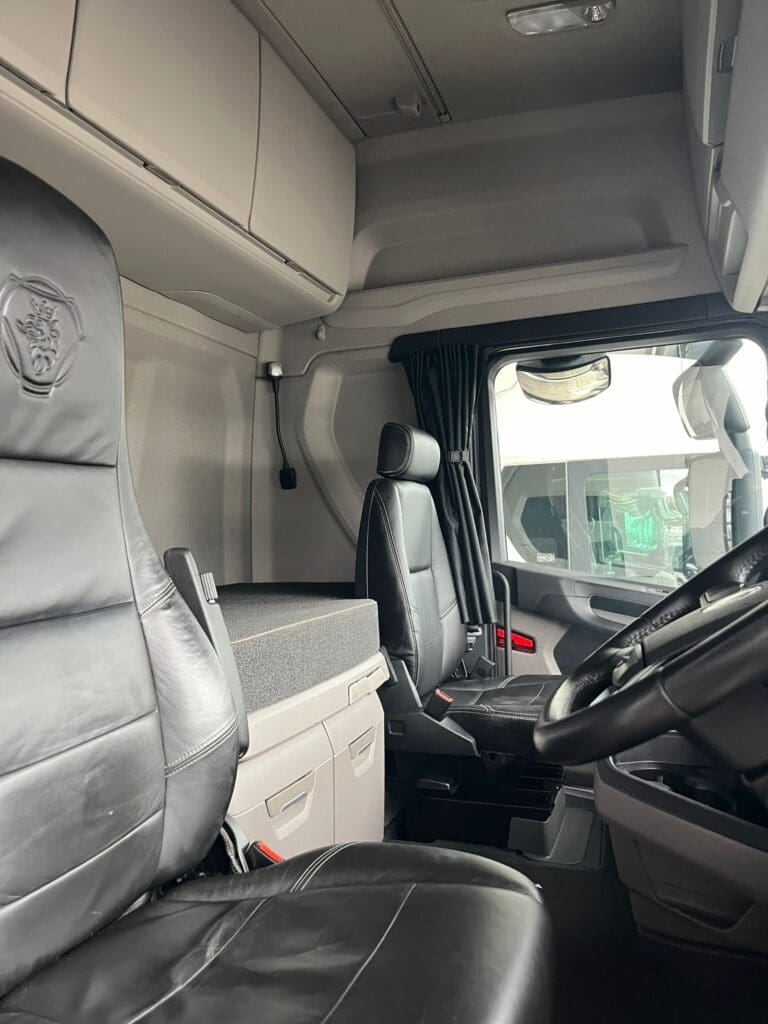
How big are sleeper cabs?
The size of sleeper cabs will vary greatly depending on the model and brand of your vehicle. Most Scania trucks, for example, offer a small space at the back of the driver’s cab with a large padded mattress, a bedside, wall-mounted, light and even a small fridge. Yet, these specifications will vary from one model to the next depending on size, price and more.
The larger sleeper cab sizes are often seen in America where restrictions on vehicle size and weight are far different. Restricted by narrower roads in the UK, vehicles must be shorter and lighter with cargo being prioritised over a luxurious sleeper cab, meaning that fold-down beds and small areas behind the seats are the norm.
So, where do lorry drivers sleep?
We know lorry drivers get their 40 winks in the sleeper cabs of their lorry, but where exactly is their vehicle parked when it’s not in use? The most popular place to stop a truck is in the parking bay of a service station or a designated truck stop, with both facilities offering dedicated showers, food options and more. Truck stops in the UK have broader bays to park your vehicle, with, AW Jenkinson Truckstop in Penrith being one of many popular locations.
Can lorry drivers sleep anywhere?
Waiting and parking in the UK has several requirements for lorry drivers. It is safe and legal to sleep in sleeper cabins while parked at service stations and truck stops, with both of these options being available nationwide. Truck drivers cannot, however, sleep in residential areas, or the hard shoulder and could receive a £300 fine if they are caught.
Do lorry drivers sleep in hotels?
It is expensive for trucking companies to promise their employees hotel accommodation and equally pricey for the drivers to shell out from their own pocket. Instead, many lorry drivers simply opt to bed down in their vehicle’s sleeper cabin, but convenient, cheap container mini-hotels have started to pop up throughout Europe that are ideal for long-haul drivers.
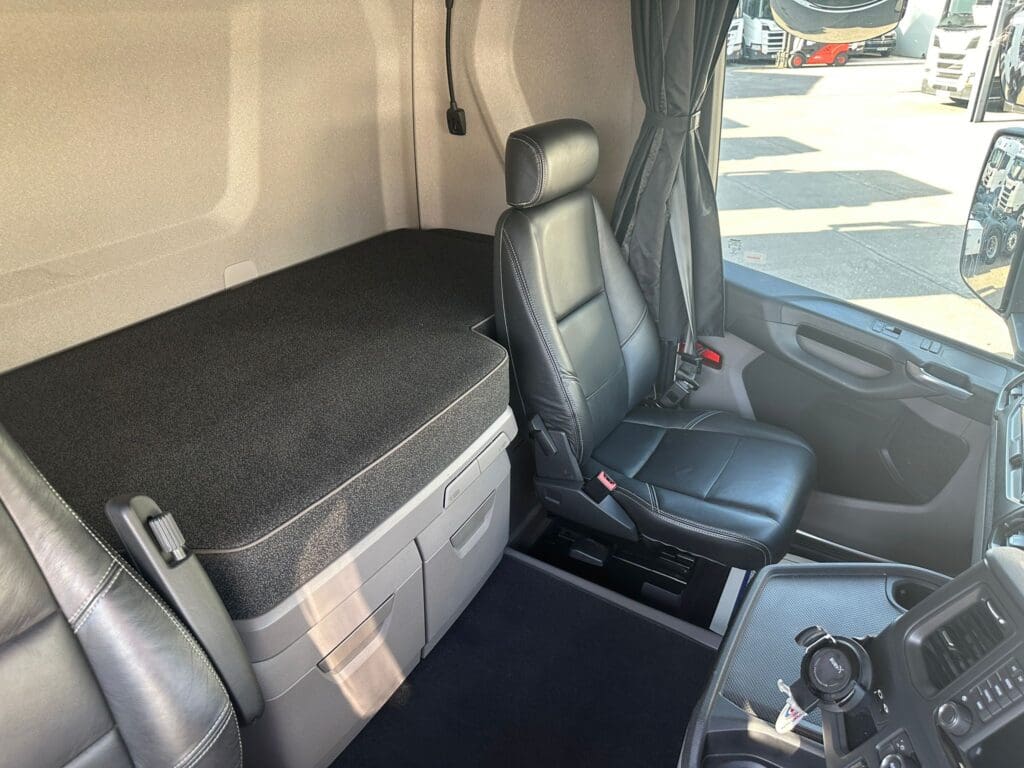
Tips for sleeping in your truck
Getting to sleep can be tricky at the best of times, so it’s very understandable that many people find it difficult to snooze in the sleeper cab of their truck. Yet, despite the sleeping environments being far different from each other, the same routine should apply, and by following the same practice as you do at home, washing your face and brushing your teeth, you can ensure the best beauty sleep possible.
Parking and security: Before parking in a safe, legal place, most often at a designated truck stop, make sure you choose your bay wisely, opting for somewhere well-lit and away from any noisy nuisances. Secondly, make sure to ensure your personal safety by locking all windows and doors before resting your head. Further security features like an alarm system and steering wheel lock should also be considered.
Comfort: Getting cosy in your restrictive sleeper cabin will likely be your biggest challenge, but it doesn’t have to be an arduous one. Unless your sleeper cabin is already installed with a quality base, invest in a proper truck mattress or mattress topper, as well as plenty of pillows, blankets and a weighted blanket to tackle any kind of temperature.
Brightness: While we’d certainly recommend parking in well-lit areas for security reasons, this decision may make your sleeping cabin considerably brighter. Blackout curtains are the perfect solution to this problem, not only preventing any light from entering but also acting as a barrier to potential thieves wishing to scope out your cabin. If this still doesn’t do the trick, an eye mask will, no doubt, plunge you into adequate darkness.
Explore our comfortable range of trucks
Many of our used Scania trucks for sale come complete with a comfortable and spacious sleeper cab that will easily allow you to get a good night’s sleep. Now we’ve answered the question of ‘where do lorry drivers sleep‘, contact us today to enquire about any of our trucks and allow our team of experts to guide you through the buying process, answering any questions you may have along the way.
Offering competitive prices on all our vehicles, we’re dedicated to bringing our customers the very best, providing the capacity to source your desired vehicle even if we don’t have it in stock. With over 50 years of experience in the industry, choose Smith Bros today to take your business to the next level.

